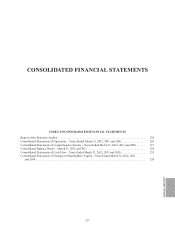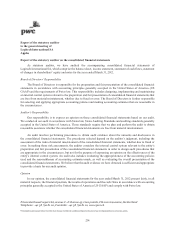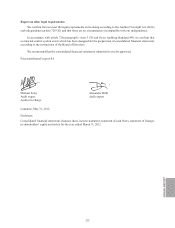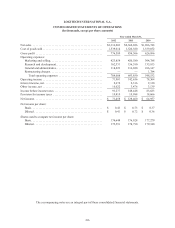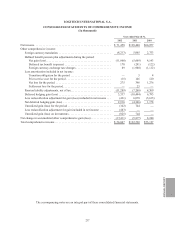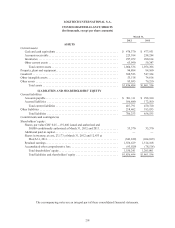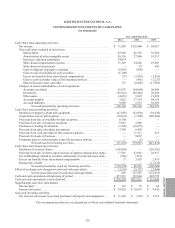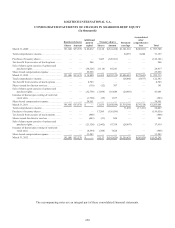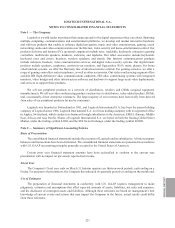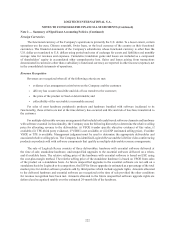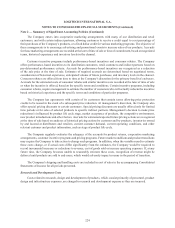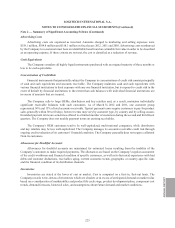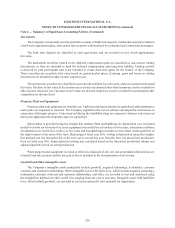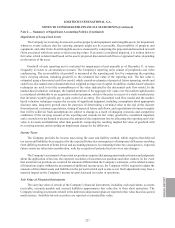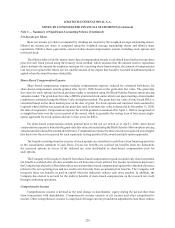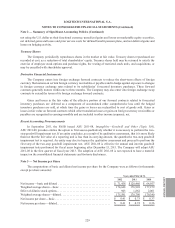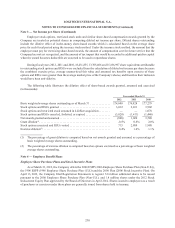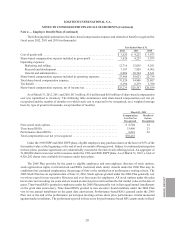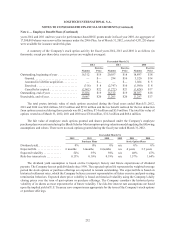Logitech 2012 Annual Report Download - page 233
Download and view the complete annual report
Please find page 233 of the 2012 Logitech annual report below. You can navigate through the pages in the report by either clicking on the pages listed below, or by using the keyword search tool below to find specific information within the annual report.
LOGITECH INTERNATIONAL S.A.
NOTES TO CONSOLIDATED FINANCIAL STATEMENTS (Continued)
LifeSize products include the following deliverables:
• Non-software deliverables
• Hardware with software essential to the functionality of the hardware device delivered at time
of sale
• Maintenance for hardware with essential software, including future, when-and-if-available
unspecified upgrades
• Other services including training and installation
• Software deliverables
• Non-essential software
• Maintenance for non-essential software, including future, when-and-if available unspecified upgrades
The relative selling price for LifeSize hardware with essential software and non-essential software is based
on ESP, as VSOE and TPE cannot be established due to variable price discounting. Key factors considered in
developing ESP are historical selling prices of the product, pricing of substantially similar products, and other
market conditions. LifeSize sells maintenance for non-essential software, maintenance for hardware with essential
software, and other services on a standalone basis, and therefore has established VSOE for those deliverables.
The consideration received for multiple element arrangements consisting of both non-software and software
deliverables is allocated based on relative selling prices to the non-software deliverables and the software
deliverables as a group. Amounts allocated to non-software-related elements, such as delivered hardware with
essential software, are recognized at the time of sale provided that the other conditions for revenue recognition
have been met. Amounts allocated to maintenance services for hardware and essential software are deferred and
recognized ratably over the maintenance period. Amounts allocated to other services are deferred and recognized
upon completion of services. Amounts allocated to software deliverables such as non-essential software and related
services are further allocated to the individual deliverables within the software group. The VSOE of non-essential
software-related services are deferred and recognized ratably over the maintenance period. The residual value of
the amounts allocated to software-related elements is recognized at the time of sale.
Revenues from sales to distributors and authorized resellers are recognized net of estimated product returns
and expected payments for cooperative marketing arrangements, customer incentive programs and pricing
programs. The estimated cost of these programs is recorded as a reduction of revenue or as an operating expense,
if we receive a separately identifiable benefit from the customer and can reasonably estimate the fair value of that
benefit. Significant management judgment and estimates must be used to determine the cost of these programs in
any accounting period.
The Company grants limited rights to return product. Return rights vary by customer, and range from just
the right to return defective product to stock rotation rights limited to a percentage approved by management.
Estimates of expected future product returns are recognized at the time of sale based on analyses of historical return
trends by customer and by product, inventories owned by and located at distributors and retailers, current customer
demand, current operating conditions, and other relevant customer and product information. Upon recognition the
Company reduces revenue and cost of sales for the estimated return. Return trends are influenced by product life
cycle status, new product introductions, market acceptance of products, sales levels, product sell-through, the type
of customer, seasonality, product quality issues, competitive pressures, operational policies and procedures, and
other factors. Return rates can fluctuate over time, but are sufficiently predictable to allow us to estimate expected
future product returns.
Note 2 — Summary of Significant Accounting Policies (Continued)
ANNUAL REPORT
223


